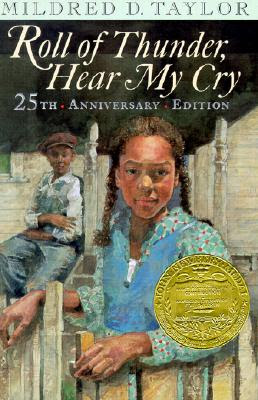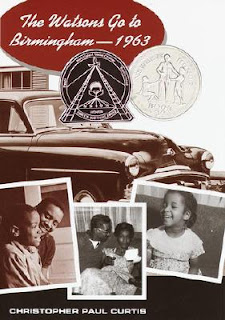
Photo courtesy of the Smithsonian Institute
My daughter’s 4th grade class is celebrating Black History Month in the most wonderful way by creating a version of Kente cloth. While it’s traditionally made with silk and cotton interweaving threads, her class used pens, paints, and colored pencils to create theirs.
Kente cloth is believed to have originated from the Akan people in West Africa*. The designs are traditionally bright, geometric, and bold. Additionally, the colors and shapes are usually symbolic of historic events, family trees, the seasons, and proverbs. (The Smithsonian Institute has wonderful information online about their “Ghanaian Kente and African American Identity” exhibition)
Making Kente cloths in your library is just one of many ideas to celebrate Black History Month. Texas Library Club has a wonderful list of books, songs, and activities – including a way of making Kente cloths by weaving strips of paper together.
We’d also love to recommend these books for your Black History Month displays:
And you can also download our Black History Month Classroom Kit.
What are you doing at your library to celebrate Black History Month? We’d love to hear your ideas (or even photos of any displays you’ve created)!
* As a former librarian, I have to share this disclaimer: I got my information from Wikipedia.

Sometimes when we talk to kids about issues going on in the world, like I wrote about on Monday with my stepson and the visiting priest from Africa who needs money for his church, it is hard for them to understand what we mean by freedom–especially if they live in a free country like the United States. It’s hard for them to imagine that there are places where children don’t have the freedom to go to school or church or the doctor when they are sick. Young children, especially, need concrete examples of what freedom means, especially if they are taking part in any type of donation activity (like collecting pennies for an organization like Loose Change to Loosen Chains).
This book, This is the Dream written by Diane Z. Shore and Jessica Alexander and illustrated by James Ransome, is a great picture book that can illustrate the concept of freedom. What I especially like about this bright and colorful book is the way it shows the United States before the Civil Rights movement, then some of the Civil Rights leaders, and then the way the country is now–with freedom for everyone. In the year 2010, the fact that black people used to drink from a separate fountain or ride at the back of the bus might be particularly shocking for our children since less than 50 years later, our president is black.
Here are a few verses from this great book:
“These are the fountains that stand in the square, and the black-and-white signs say who will drink there.”
“These are the leaders whose powerful voices lift up marchers demanding new choices.”
“This is the fountain that stands in the square and the unwritten rule is to take turns and share.”
Love it!!
In order for children to understand what it looks like when there’s not freedom and what it looks like when there is, you can use a picture book like This is the Dream by Diane Z. Shore and Jessica Alexander. Then you can explain to them how around the world in the 21st century, there are still people living without freedom, and we are collecting pennies to try and help them. The Civil Rights leaders helped in the United States, and now it’s our turn!
Hey, everyone, we have a comment from a friend over at the Guys Read blog regarding the Evil Bunny Lagomorph video:
Wow, now that video was weird. I agree with you, that had HUGE teeth.
Funny though....
Rick Ze Dragon
Guys Read
Thanks, Rick. You're right about those teeth. I would keep watching my back, Bill. You never know when it would sneak up on you "with sharp, nasty teeth!"
I also wanted to let you know that I have updated the list of books we've talked about. Check it out under the links on the left-hand side of the page. The list can be printed, so print one and impress your friends, parents, teachers, media specialists, and librarians.
Speaking of books, here are some I've liked that relate to Black History Month. Yes, I know that February is almost over but I thought that I'd make a contribution now and apologize for bieng so late. But the real reason is that I get very busy here; sometimes so busy that I don't have time to read chapter books!! Imagine that--too busy in a library to read! That's like working for Domino's and never getting to taste the pizza! (I worked for Domino's once and always made sure I got some pizza!!!) I don't mind, though, because I'm busy helping kids find things they need and that's a good feeling. Anyway, I said all that to let you know that I was trying to read this book for Black History Month but never found time until the last couple of days.
It's
Uncle Shamus by James Duffy. (No picture available) The setting is Shanty Town, a row of run-down shacks on a dirt road. Akers Johnson has lived in one of those shacks with his mom ever since his dad ran off. It's not much of a life--his shoes fall apart and there's no money for new ones. Every night they have canned soup and beans for supper. Then one day an old blind black man moves into one of those shacks. He used to live there more than thirty years ago--so why would anyone want to come back there? And he seems to have plenty of money--where did it come from? Why does he hire Akers to show him around town and why is he so curious to know exactly where everything is? The author doles out just enough information about his mysterious past to made you keep reading. Then you really want to keep going after you find out the whole story and get involved in the plans Shamus has for Akers. I will tell you this much--one of the keys to the story was that "if a black man came walking by...[he] didn't even see him." The story is good and you'll learn about friendship and the importance of doing the right thing, even if it's 35 years later. If you don't, you could end up to be like Buddy Dupois.
Here is another good book for Black History Month:
Pappy's Handkerchief by Devin Scillian.

It's a picture book, sure, but some picture books are meant for older readers. Besides, this book is part of the Tales of Young Americans series, which are not written for little kids. This story is fictional but based on a true historical event--the Oklahoma Land Rush of 1899. Young Moses and his family run an outdoor fish stand in Baltimore in 1899. It's March, the weather is freezing, and they aren't selling enough to make a living. One of their friends reads them a newspaper article which says that the government will give land free in the Oklahoma Territory to anyone who will farm it for five years. Everyone wonders if the government would give free land to black people, but the newspaper says it's for anyone. So it's worth a try. The trouble is, they have to be there by April 22. To do that, they've got to get the money to buy a wagon and then make the long journey to Oklahoma from Baltimore. Once they get there, they find hundreds of other people lined up to race out and claim land. Will the family be able to get to an area fast enough? Then their wagon crahses down a gully and Moses's father breaks his leg. Was the long journey for nothing? You will hardly stand the suspence as you read to find out. This is a terrific book that you'll really enjoy!!
Here are some others. I won't discuss them at length because it would take all day but, believe me, these are all powerful books full of people, places, and scenes that you won't ever forget. I've read them all and they've been among the best I've ever come across.
King Mitchell; illustrated by James Ramsome

Very great picture books meant, once again, for older readers. I talked about them on the December 18, 2007 post.
Some of you may have read this before; it shows up on a lot of school lists--and with good reason!!! This story of an African-American family trying to get through hard times and discrimination in rural Mississippi during the 1930's is one that will hit your heart and gut. I've read it twice and never got bored either time.
Another one of the best books I've ever read. An African-American family in Flint, Michigan in 1963 finds that the older brother is starting to hang out with a bad crowd. The father decides that the best thing to do is take the family to spend the summer with the aunt who lives in the country outside Birmingham, Alabama. They are caught in a famous historical incedent that changes not only thier lives, but the whole United States. It's funny, it's moving, it's one you've got to read!
Well, let me apologize again for taking so long to get this posted, but then, these books are good any time of year. Besides, some things that are highlighted for a month should be celebrated all year, right?
Carl

By Anatoly Liberman
Cockney: in the 19th century, the origin of few words was discussed as much and as vehemently in both professional and lay circles. It surfaced in a text dated 1362, but the earliest known attempt to explain its derivation goes back to 1617. John Minsheu, the author of the first etymological dictionary of English, recounted an anecdote about a London child, who, after being taken to the countryside and informed by his father that horses neigh, heard a rooster and asked: “Does the cock neigh too?” Hence, allegedly, cockney, a derisive name for a Londoner. This story has been repeated innumerable times and can be found in both the OED and the multivolume American Century Dictionary. Of course, the anecdote was told tongue in cheek, for no one could grow up in London without knowing anything about horses. Yet even 200 years later some credulous folks, who touched on the origin of cockney, referred to Minsheu as their authority. (more…)
Share This










